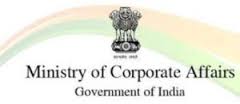Extending the deadline for the third time, Corporate Affairs Ministry has now given time till July 7 for companies to submit their statutory filings as issues related to MCA21 portal are yet to be fully resolved.
MCA21 is used for making electronic filings under the Companies Act and is managed by Infosys for the ministry.
The upgraded system went live in the last week of March and stakeholders have been facing issues in using the portal.
The Ministry has extended the filing deadline for the third time in less than two months.
Initially, the extension was till May 10 and later the deadline was fixed for June 10.
Giving more time, the Ministry has extended the time limit for making the requisite filings under the companies law to July 10.
“…keeping in view, requests received from various stakeholders, it has been decided to extend the period for which the one time waiver of additional fees is applicable to all e-forms which are due for filing by companies between March 25 to June 30, 2016 as well as extend the last date for filing such documents and availing the benefit of waiver to July 7, 2016,” it said in a communication dated May 31.
While the communication does not mention anything about MCA21, Ministry officials expect to resolve the issues related to the portal soon.
On April 6, an Infosys spokesperson had said it was working with the Ministry to resolve the “minor teething problems” related to MCA21.
The portal is designed to fully automate all processes related to enforcement and compliance of legal requirements under the Companies Act.
Meanwhile, the Ministry has also extended the time limit for submitting Form 11 of LLP in respect of 2015-16 financial year without any additional fees to June 30.
Form 11 is for filing annual returns LLPs.







